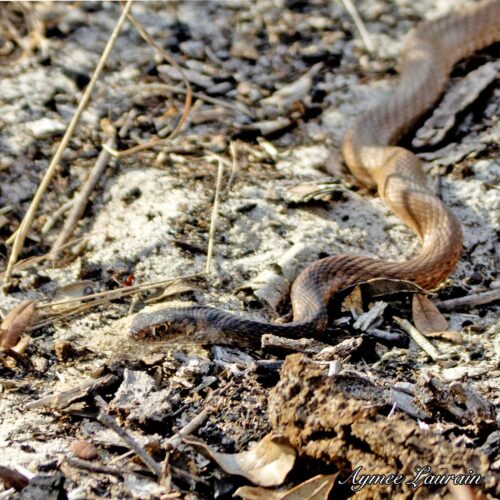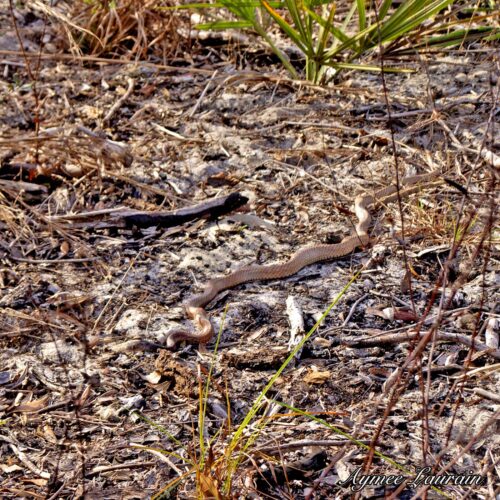There are six subspecies of coachwhip snakes that are currently recognized, but the Eastern Coachwhip (Masticophis flagellum flagellum) is the only one that occurs in Florida. These nonvenomous snakes are one of the longest snakes seen in Florida. Coachwhips are very observant; they often rest or crawl with their head and neck raised above the ground as they scan the environment. They are also excellent climbers.
Adults can reach 42-60 inches in total length. This long, slender snake typically has a dark brown or black head, neck, and front part of the body; towards the back end, it becomes light tan. The head is large and narrow, with large scales over the eyes. Their eyes are large and prominent with round pupils and yellow irises. Juvenile appearances are slightly different, with brown or tan dark cross bands down the neck and back. The juvenile pattern will gradually change to adult one in about two years.
Coachwhips are abundant; their habitat is typically hot and dry with open canopies. These snakes are extremely fast and agile. When approaching, they will typically flee for shelter. Though if cornered, both juveniles and adults will strike an attacker and will rapidly vibrate the tip of their tail, producing a buzzing sound in leaf litter. These snakes are typically nonaggressive, and striking is their last resort.
Coachwhips are diurnal, meaning they are active during the day, predators, they feed on small mammals, birds and their eggs, other reptiles, frogs, and insects. Because these snakes are in Florida, lizards are most likely what make up a primary part of their diet. They are not true constrictors; the snakes overpower their prey by grabbing with their jaws and pressing down against the ground until it stops struggling or by quickly swallowing it alive.
Coachwhips are not true constrictors and overpower their prey by simply grabbing it in their jaws and pressing it against the ground until it stops struggling or by quickly swallowing it alive.
In Florida, females lay around 4-24 eggs. Eggs are laid in loose soil, debris, leaf litter, rotting logs, or animal burrows. Young will hatch between August and September.
Cool Fact! The name “Coachwhip” comes from the large tan scales on its long tail, which looks like a braided bullwhip.


